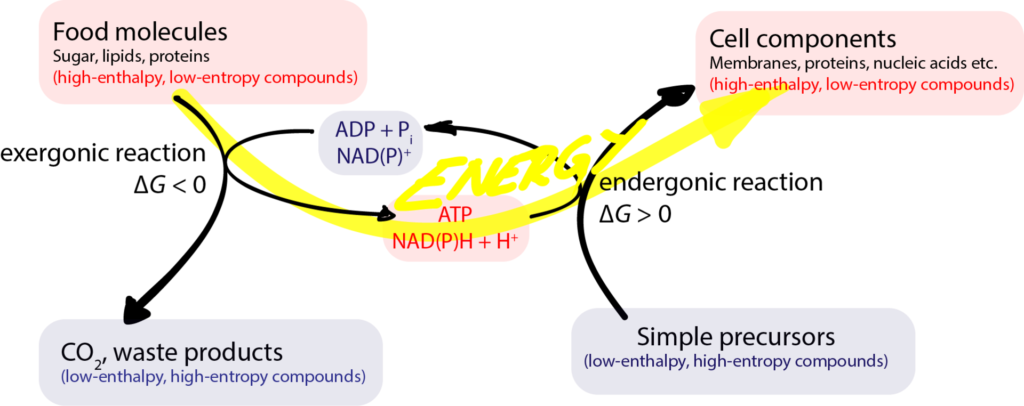What is “reducing power”? Why does it matter?
We are (or should be) familiar with adenosine triphosphate (ATP), the energy currency of life. But you need more than ATP to build a cell, you also need reducing power.
To build molecules and cells, plants can start from carbon dioxide and water, because plants can do photosynthesis, i.e. they can make organic matter from the “the air” (plus minerals from the soil).
We humans, start with simple organic molecules like glucose and have the enzymes to transform them into proteins, DNA, carbohydrates that we need (exception “essential” amino acids, essential fatty acids, vitamins) but we use a lot of energy in the form of ATP and what is called reducing power (NADH and NADPH) to do all those transformations. Again, this points to the crucial role of mitochondria in human life. Reduced nicotinamide adenine dinucleotide phosphate (NADPH) is an essential electron donor in all organisms. It provides the reducing power that drives numerous molecule-building reactions, including those responsible for the biosynthesis of all major cell components.

Figure: respiration produces energy and reducing power, whih the cell will use to make new components.
The oxidation of foodstuffs results in the transfer of an electron form the fuel molecule to an electron acceptor which is then reduced. Electron transfer of this sort generates compounds like ATP.
Mitochondria are in charge of providing most of the ATP and reducing power within the cell. Mitochondria are organelles whose main function is to generate energy for the cell. This is achieved by a multi-step process called oxidative phosphorylation or the electron transport chain (ETC). Located at the inner mitochondrial membrane are five multiprotein complexes that generate an electrochemical proton gradient used in the last step of the process to generate ATP from ADP (adenosine diphosphate). To do this, the multiprotein complexes translocate electrons, eventually delivering them to molecular oxygen.

Figure: cell respiration produces energy as ATP, plus reducing power
This process is not completely error-free and misdirection of electrons ultimately leads to the generation of reactive oxygen species (ROS), making the mitochondrion the site of the highest ROS turnover in the cell. In close proximity with this site lies the mitochondrion’s own genomic material, the mtDNA that will be damaged by the ROS* produced by the mitochondria.
Glycolysis happens outside the mitochondria, in the cytosol, but this process extracts a very small amount of energy and reducing power from its substrates. As we age it seems that glycolysis stays more or less the same, but it’s respiration by mitochondria that is most affected, producing less energy from the same amount of food. This is how the mitochondrial theory of aging got started. This is also why the skincare industry started adding ingredients relevant to respiration, like alpha lipoic acid and CoQ10, to its anti-age products.
References
Ames BN, Shigenaga MK, Hagen TM (1995) Mitochondrial decay in aging. Biochim Biophys Acta 1271:165–70
Krutmann, J., & Schroeder, P. (2009). Role of mitochondria in photoaging of human skin: the defective powerhouse model. Journal of Investigative Dermatology Symposium Proceedings, 14: 44–49. doi:10.1038/jidsymp.2009.1
